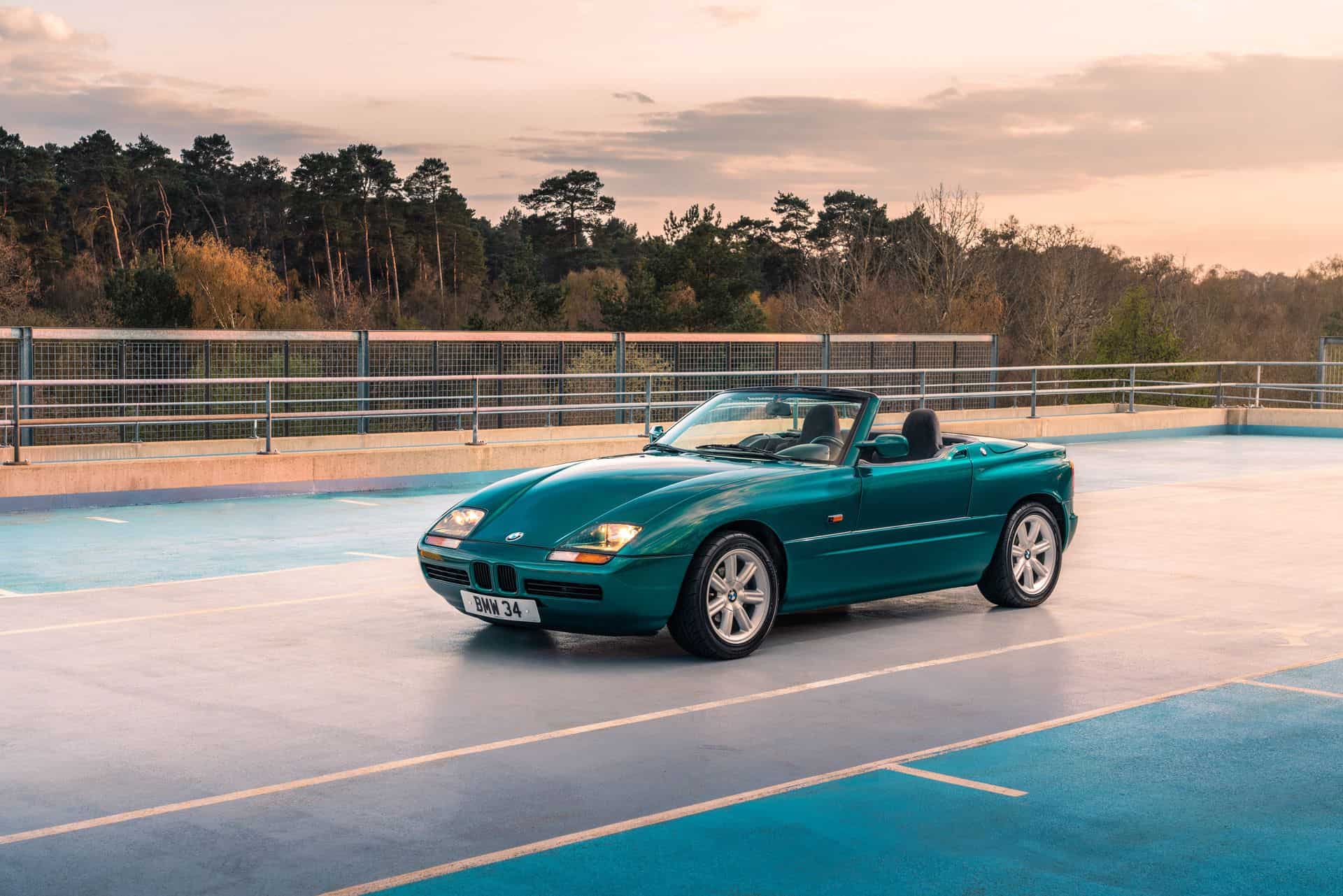As the first car developed by BMW Technik, the Z1’s modular design, radical styling, and influence on the Z3 and Z4 cement its legacy in BMW history.
Forty years ago this year, BMW began getting real serious about concept vehicles. The company’s management board wanted to create a “think tank” for cutting-edge cars. That group was called BMW Technik, which was formed in 1985. And the very first car the semi-covert group started work on was the BMW Z1 Concept, marking the beginning of the BMW Z Series as we know it today and as we have known it for the past four decades. Without the Z1 Concept, some truly iconic BMW models would’ve never come to fruition. Forty years later, we’re looking back on the Z1’s legacy.
How Work Started on the BMW Z1 Concept
The BMW Z1 started life in 1985 as a purely conceptual vehicle. A special suspension, dubbed the “Z axle,” along with body panels made from a futuristic and high-strength material, were the core components. The car wasn’t even planned to have doors, originally. By August 1986, the Z1 was complete, with a road-going concept to boot. The car even touted the weird, drop-down doors that were almost guaranteed to ensure the Z1 remained a concept and nothing more. While Technik’s boss was insistent on producing the Z1, it was still very much up in the air until after the car debuted. Turns out, it was a hit. Customers started letting BMW know that the Z1, which apparently showed just enough 507 and 328 influence to intrigue, was something that needed to go into production.
But we’re skipping ahead just a little bit. The BMW Z1, as a concept, saw a breadth of design changes throughout its history. The car wasn’t just a styling project and technical tour de force. It was also designed from the ground up to be a flexible platform, potentially accommodating a wide variety of models. You could even think of it as an early “modular platform” that we see today from the brand. As a result, BMW Technik sketched, and eventually shelved, a plethora of interesting Z1 Concept cars. Not only was there an early version of the clown shoe coupe shape that later appeared on the Z3 M in the late 1990s, we also saw F1-engined Z1 Concepts, off-road versions (one cleverly dubbed “Grasshopper”), and more. Another core focus of the Z1 was speeding up BMW’s production process.
Bringing the Z1 Concept to Reality and Beyond
Just over a year passed after BMW debuted the Z1 before official communication came. The company declared the Z1 Roadster was going to become a reality in August 1987. That was in fact a bit of a hurdle for BMW, as hand-assembly was almost mandatory on account of the Z1’s reliance on Xenoy plastic body panels and unorthodox design. BMW ironed out the kinks and by 1988 was able to start production, bringing six Z1s into the world per day.
Then, of course, there’s the legacy. Without the Z1, we wouldn’t have modern classics like the Z4 M40i. But we’d also have missed out on cars like the Z3 M Roadster and its shooting brake brother, the Z3 M Coupe — affectionately and colloquially known as the “clown shoe” for its incredibly unique shape. The equally exotic Z4 M Coupe and its open-top counterpart, the Z4 M Roadster, too, wouldn’t have existed without the Z1. And the legacy all started 40 years ago this year.
Parts of this story were gleaned from BMW’s Hidden Gems, part of Steve Saxty’s excellent BMW Behind the Scenes collection. We highly recommend checking the book out for yourself if you can. You’ll find more about the Z1 and BMW Technik, including exclusive photos and details you won’t find anywhere else.







































































